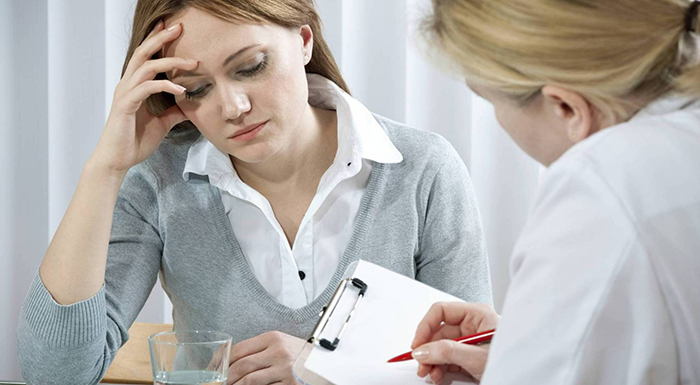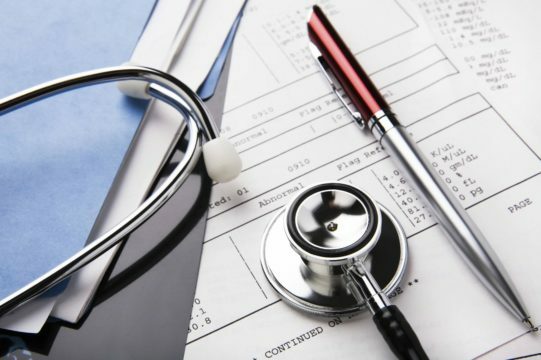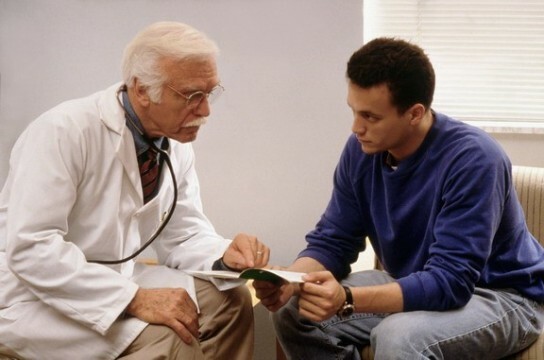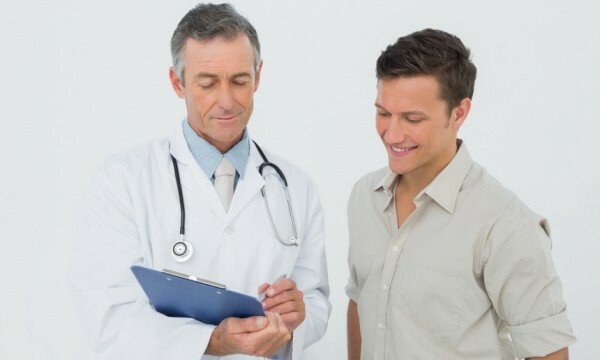Under cystic ovarian changes, an endocrine system disorder is considered, in which the formation of multiple cysts( polycystosis) begins in the ovaries, and as a consequence they lose their functionality and significantly increase in size.

What is cystic ovarian change? The ovaries are located in the pelvic area. Their task is to produce mature eggs and produce such hormones as: progesterone and estrogen. Cystic ovarian changes - is formed inside or outside the ovaries, a mass of small vesicles( cysts) of benign etiology. This condition is also called polycystosis, which, according to statistics, occurs in 4-7% of women.
Cystic change in the right ovary
Cystic changes in the right ovary, just like the left one, disrupt the reasonable balance of hormones in the female body. There is suppression of the formation and maturation of the egg, due to the fact that androgens begin to predominate over female hormones. This process leads to the impossibility of ovulation.
A characteristic feature of primary infertility is the absence of ovulation. At the same time, during the examination, the presence of cysts in the ovaries is detected. It is noticed that the right ovary( cystic-altered) often becomes the cause, leading to the disorder of the monthly cycle. Also, there is an increase in body weight and hair growth in places where they were not previously.
Cystic transformation of the right ovary can be caused by a disorder of the pituitary or hypothalamus, adrenal cortex, thyroid gland and gonadal gland of a woman. You can not exclude hereditary factors. Excess insulin, which stimulates increased production of androgens, can also become a prerequisite for the development of polycystosis.
Cystic changes in the left ovary
Cystic changes in the left ovary are also associated with loss of balance in the endocrine system. The disease occurs in the disorder of the regulation of the monthly cycles due to a malfunction in the work of the adrenal cortex, pituitary gland and hypothalamus. Polycystosis happens, as primary( true), and secondary.
Primary - true
It is considered a congenital pathology or a hereditary disorder that occurs in girls during puberty and at a time when menstrual function is developing.
The development of primary polycystosis is provoked by excessive content of male hormones. This disease also occurs when a violation of the function:
- pancreas( increases the production of insulin);
- of the pituitary gland;
- of the hypothalamus;
- of the adrenal gland( hypersecretion);
- of the ovaries( irregular monthly or complete cessation)
It has already been proved that the hereditary factor plays a significant role in the formation of small-cystic ovarian changes.
Secondary polycystosis
Secondary polycystic disease develops against a background of other diseases that can adversely affect the functioning of the ovaries. This pathology can appear in patients of any age group.
 Factors that can cause cystic changes in the left ovary include:
Factors that can cause cystic changes in the left ovary include:
- use of oral contraceptives;
- reception of hormonal preparations;
- complications after pregnancy, previous abortions;
- endocrine diseases;
- diabetes mellitus( second type);
- development of a large number of androgen( hyperandrogenic) by a woman's body;
- sudden changes in diet( rapid weight loss);
- climate change;
- frequent nervous, stressful situations;
- obesity;
- inflammatory gynecological diseases;
- breast-feeding.
The very violation itself consists in the fact that the capsule of the ovarian follicle thickens, and it does not break at the right time.
It is important to remember that if you do not take timely measures to get rid of this pathology, the disease leads to infertility. However, just when a woman is examined, due to infertility, polycystosis is detected.
When confirming this diagnosis, do not despair, because, there are many therapeutic methods that can cure this disease. The main thing is to start on time to be treated.
Clinical picture
Clinical manifestations of the disease:
- appearance of pain in the lower abdomen;
- menstrual irregularities: the appearance of long delays or the complete cessation of menstruation. Menstruation can become rare and lose regularity. In addition, they become painful and very abundant;
- certain irradiation of pain( in the leg, in the lower back and pelvic region, and when the cyst ruptures, into the rectum);
- quickly grease hair and can appear seborrhea, the skin also becomes oily. There can be pimples, acne. These therapies do not respond to these therapies, since they arise because of the increased production of androgens;
- appears unreasonable obesity. The fat can be distributed in a uniform manner, or accumulate, localizing at the waist and abdomen;
- hirsutism. The body begins to grow hair: on the hips, legs and stomach;
- no changes in basal temperature on critical days, which should decrease before ovulation and rise on the day of ovulation( above 37C).
Treatment of
 Treatment of small-cystic ovarian transformation is carried out in 3 stages:
Treatment of small-cystic ovarian transformation is carried out in 3 stages:
- The first stage. This is a preparatory stage, and is carried out by different methods, based on the nature of the disease and its cause, for 4 different groups:
- The first group includes women with obesity, insulin resistance, and neuroendocrine disorders. This group is prescribed a diet, for body mass correction, drug therapy and acupuncture. To reduce the level of insulin used drugs such as Metformin and others.
- For the second group, measures are taken to restore ovulation, reduce prolactin levels, using the drug Hinagolide or Kabergoline. This treatment is required to continue for six months to prepare for the next stage.
- The third group includes patients with an increased content of male hormones( hyperandrogenia).The doctor appoints Dexamethasone, to lower the concentration of androgens in the blood. Take the medicine should be within 1 year. This method helps reduce infertility, and increases the chances of conceiving a child.
- The fourth group includes women with hyperandrogenia of adrenal origin. It is prescribed to take hormonal medications, for example, Diane. The essence of the method is to reduce the level of male hormones that trigger the infertility problem.
- The second stage. The second stage is to artificially stimulate ovulation. For this, a remedy such as Clomiphene is used. In this case, patients have to be divided into subgroups:
- if the blood levels of prolactin are increased, then Bromocriptine is added to the therapy;
- with an increased content of androgens, use Clomifene in combination with glucocorticosteroids;
- to others appoint Clomifene, according to the standard treatment regimen.
- The third stage. In the third stage of therapy, gonadotropin drugs or FSH preparation are used. Doses can be prescribed standard or decreased. It is noticed that such treatment increases the chances of getting pregnant up to 58%.
In the presence of any pelvic pathology, surgical treatment is prescribed. The method of laparoscopy involves bilateral resection of the ovaries. The effect of the operation is manifested only after 6 months or after 1 year. Surgery is also indicated if conservative therapy has not yielded positive results.
Additional treatments for
Success in the treatment of polycystosis depends not only on the knowledge of doctors and medicines, but also on the way of life that leads a woman. As already mentioned, weight normalization is an important point in the treatment of this pathology. It is necessary to limit the use of carbohydrates: pasta, sugar, cereals, chocolate, potatoes, etc. It is necessary to reduce consumption of table salt.
Simultaneously with the diet, you need sports, at least 2 times a week. Clinical trials have confirmed that 2.5 hours per week of physical activity( in combination with diet therapy) is enough to get the same effect as the use of medications. This can be explained by the fact that there is a large amount of androgens in adipose tissue. Getting rid of it, a woman not only improves her figure, but lowers the level of the hormone in the blood, which is beneficial for the treatment of polycystosis.
Physiotherapy also gives good results. Galvanophoresis with lidase can be used. This procedure activates the enzymatic system of the ovaries. The course of therapy is conducted for 15 days.
Unfortunately, the use of traditional medicine does not produce results, but rather tighten the disease, so it is not recommended to engage in self-medication.
Prevention
For the prevention of polycystic as well as other gynecological diseases, it is necessary to visit the gynecologist on a regular basis. Detection of the disease in the initial phase, allows to avoid severe consequences, through timely prescribed treatment of violations. Prevention of abortion and other diseases, including inflammatory, which can affect the function of the ovaries, is equally important.
Moms of teenage girls should monitor the health of their daughters and, when the first signs of pathology appear, immediately show the child to a competent specialist.
Related records
 Factors that can cause cystic changes in the left ovary include:
Factors that can cause cystic changes in the left ovary include:  Treatment of small-cystic ovarian transformation is carried out in 3 stages:
Treatment of small-cystic ovarian transformation is carried out in 3 stages: - The first group includes women with obesity, insulin resistance, and neuroendocrine disorders. This group is prescribed a diet, for body mass correction, drug therapy and acupuncture. To reduce the level of insulin used drugs such as Metformin and others.
- For the second group, measures are taken to restore ovulation, reduce prolactin levels, using the drug Hinagolide or Kabergoline. This treatment is required to continue for six months to prepare for the next stage.
- The third group includes patients with an increased content of male hormones( hyperandrogenia).The doctor appoints Dexamethasone, to lower the concentration of androgens in the blood. Take the medicine should be within 1 year. This method helps reduce infertility, and increases the chances of conceiving a child.
- The fourth group includes women with hyperandrogenia of adrenal origin. It is prescribed to take hormonal medications, for example, Diane. The essence of the method is to reduce the level of male hormones that trigger the infertility problem.
- if the blood levels of prolactin are increased, then Bromocriptine is added to the therapy;
- with an increased content of androgens, use Clomifene in combination with glucocorticosteroids;
- to others appoint Clomifene, according to the standard treatment regimen.



